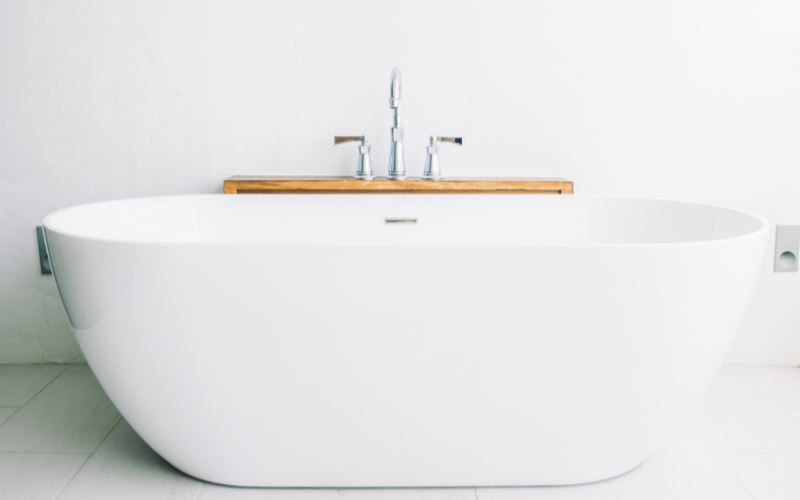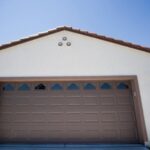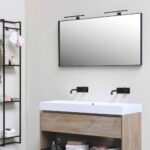The more variety of lighting in bathroom, the better. Just like any other area of bathroom, a bathtub also needs to be properly illuminated. One option to illuminate a bathtub is by wall sconce. While lighting bathtub with wall sconces, proper distance from bathtub should be kept.
For a standard size bathtub, wall sconces around the bathtub should be placed at a distance of 12 inches from the either side of bathtub at a height of 4.5 feet from the floor or 3 feet from the top of bathtub with a gap of 3 feet between each wall sconce.
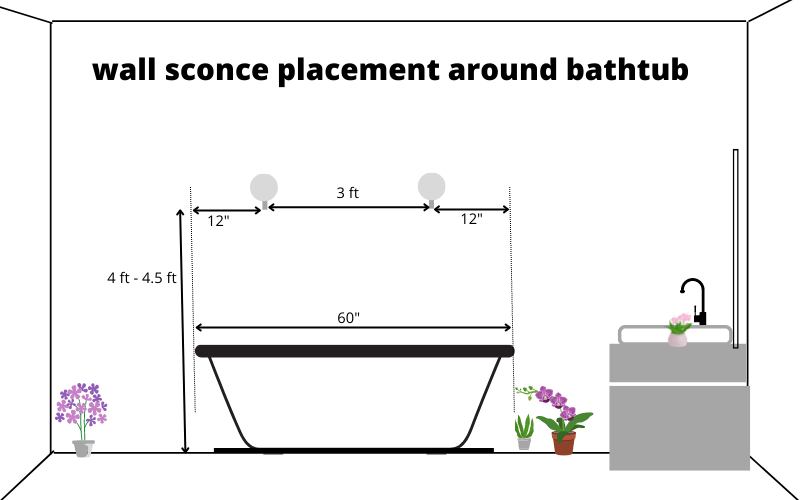
This much distance from the bathtub will ensure that sufficient light falls over the getting in the bathtub without wall socnce getting too close while bathing.
The table below shows different bathtub sizes and how much gap should be left between wall sconce and bathtub
| Bathtub size | distance from each sides of bathtub | Gap between two wall sconces |
|---|---|---|
| 32″×60″ | 12 inches | 2.5 – 3ft |
| 30″×45″ | 8 inches | 1.7 ft |
| 32″×72″ | 12 inches | 3 ft |
| 36″×60″ | 12 inches | 2.5 – 3ft |
| 27″×55″ | 12 inches | 2 ft |
| 32″×72″ | 12 inches | 3 ft |
Keep reading as below the proper size of wall sconce, how bright the wall sconce would be and many other useful facts are discussed.
What size wall sconce over bathtub
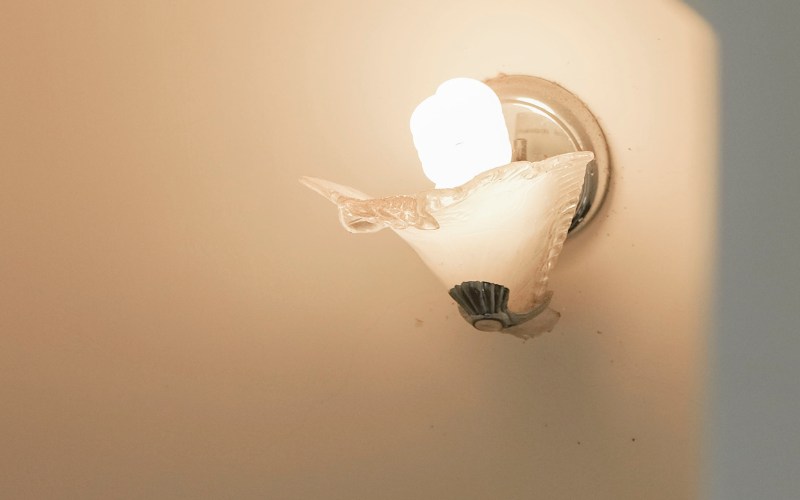
For a normal-size bathtub with a length of 60″ and a width of 30″, the wall sconce should be 3 to 4 inches wide and 2.5 to 3 inches long.
Generally speaking, the bigger the bathtub is, the more is its lighting requirement and ultimately a big size wall sconce would be required.
The table below shows the wall sconce sizes for different size bathtubs.
| Bathroom size | wall sconce width |
|---|---|
| 32″×60″ | 2.5″ to 3″ |
| 30″×45″ | 2″ to 2.5″ |
| 36″×60″ | 3″ |
| 32″×72″ | 3″ – 4″ |
| 41″×60″ | 2.5″ -3″ |
| 27″×55″ | 2.5″ |
| 32″×72″ | 3″- 4″ |
How bright should the wall sconce be over the bathtub?
For illuminating the bathtub, each wall sconce placed around the bathtub should be 500 – 600 lumens bright.
As suggested by lighting experts, an area like a bathroom requires around 200 lumens of light per square meter. From this, we can calculate how much light is required over bathtub.
The light required over bathtub can be calculated by multiplying the sqm area of bathtub with 200.
Below is a table that shows how bright should each wall sconce be for different bathtub sizes
| Bathtub dimensions | brightness of wall sconce (pair) |
|---|---|
| 32″×60″ | 170 lumens |
| 41″×60″ | 170 lumens |
| 30″×45″ | 165 lumens |
| 36″×60″ | 170 lumens |
| 60″×60″ | 180 lumens |
| 27″×55″ | 175 lumens |
| 32″×72″ | 200 lumens |
From the table above it is clear that the lighting requirement of a bathtub is very little and can be easily met with a single light source. Therefore, while using a wall sconce over the bathtub it is a good practice to use a dimmer to reduce the intensity of light.
Color temperature of light from wall sconce over bathtub
A bathroom is a place where attention is required. Therefore the color temperature of cool white (7000k – 8000k) is ideal for illuminating a bathtub with a wall sconce.
However sometimes, while in bathtub one might require a relaxing ambiance i.e while using warm water in bathtub. In that case, to create the perfect ambience,the light should be of a different color temperature.
Hence, it is a good practice to use wall sconce with adjustable color temperature to illuminate the bathtub. So that when a warm relaxing ambience is required, warm white light can be utilized and when attention is required cool white light can be utilized.
Should wall lights face up or down ?
If there are no other light fixtures in the bathroom and the bathtub appears to be dark, it is a good practice to face the wall sconce downwards.
However, if the bathroom is properly illuminated by other light sources and wall sconces are to be used only to add accent lighting over the bathtub, then the wall sconce should face upwards.
How window near the bathtub affects the distance of wall sconce from bathtub ?
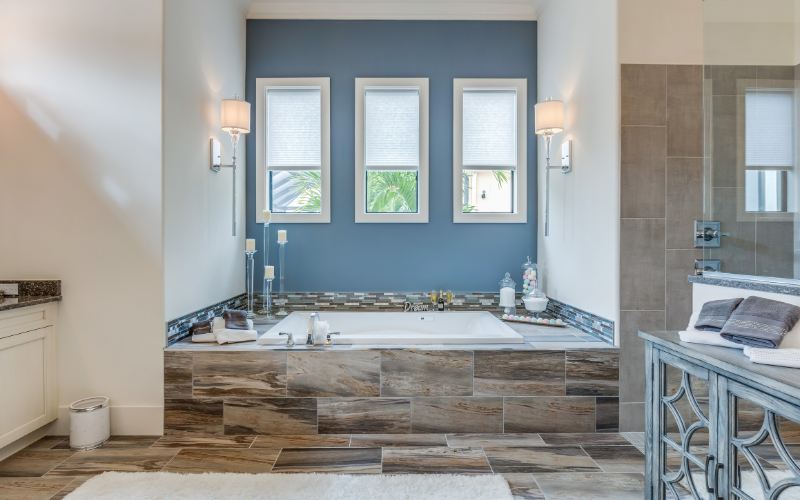
The wall sconce can be placed at the either side of window only if the width of window remains within the length of bathtub.
Simply put, if the window is wider than the length of bathtub, wall sconce should not be placed around the bathtub and if the window is shorter than the length of bathtub, then the wall sconce can be placed at either side of the window at a height of 3 – 3.5 feet from the top of bathtub.
Even though during day time, the window would provide enough light for the bathtub but during night there is a need of light source around bathtub if the bathroom is not bright enough.
Can a single wall sconce be used over bathtub ?
Yes, a single wall sconce can be placed over the bathtub but only when the bathtub is placed at the corner where two walls are meeting and there is a window on one of the walls.
See the image below for better understanding.
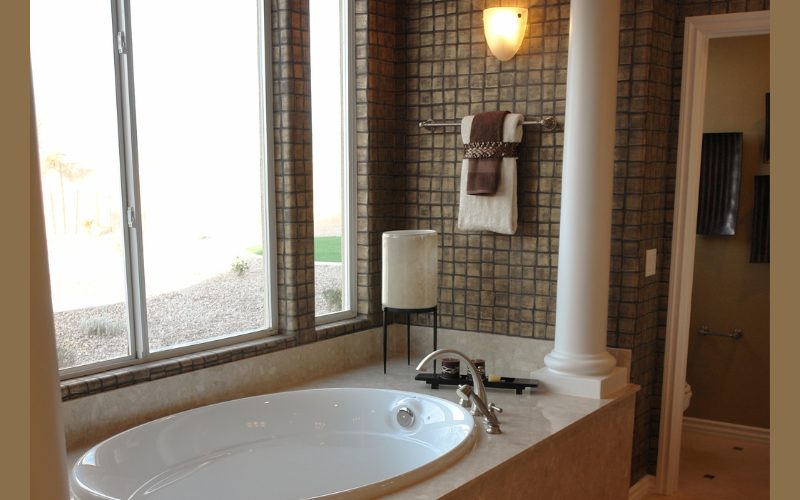
For bathtubs that are placed near the centre of walls a single wall sconce does not look symmetrical. In such a placement of bathtub, only a pair of pair of wall sconce looks symmetrical and appealing.
However if the dimension of a bathtub are such that only a single wall sconce can be installed over bathtub then wall sconce of only specific shape should be used.
Wall sconce which are installed horizontally mimicking that of a led tuve light are thus one option if only one wall sconce is to be installed over bathtub.
While installing wall sconce horizontally make sure that wall sconce emits light in both directions i.e upwards and downwards.
Should wall sconce over bathtub be damp rated ?
The wall sconce over bathtub is placed at a distance such that water splashes does not reach at the light fixture. However, bathroom is a place where moisture is a common thing.
It is therefore recommended for all the luminaries to be used in the bathroom to be damp rated. As it avoids any chances of moisture entering the light source thus preventing the impairing of its functioning long term.
